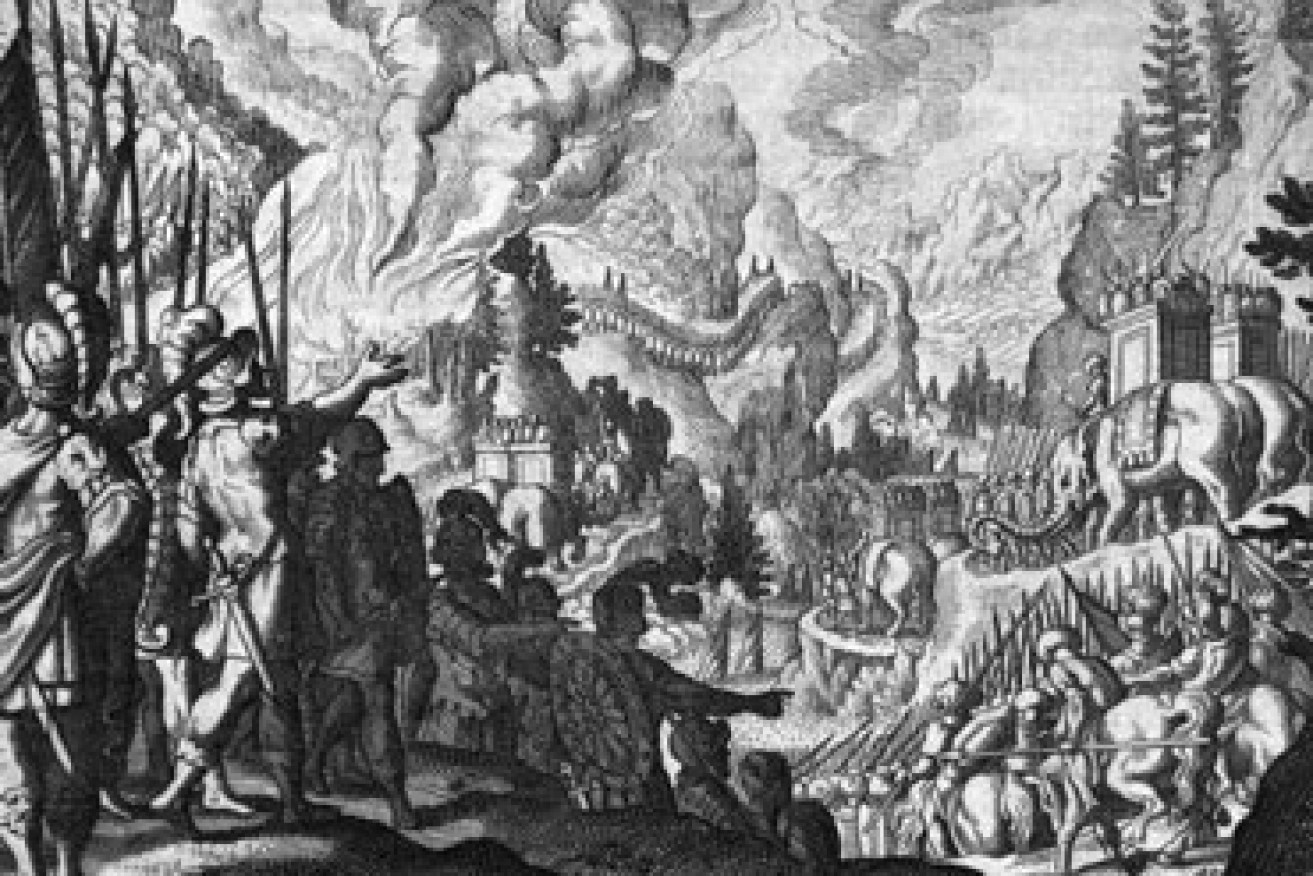Horse poo solves 2000-year-old mystery

Getty
A 2000-year-old sample of horse faeces has solved one of the ancient world’s most enduring mysteries – how Carthaginian General Hannibal led an army of 40,000 men, as well as horses and elephants, across remote terrain and snow-covered Alps to surprise unsuspecting Roman forces.
Historians have long argued over how General Hannibal, the commander-in-chief of the Carthaginian armies, pulled off this tactical masterstroke that almost saw him conquer the might of Rome.
It was, by most assessments, one of the greatest military feats in history.
The daring march was made from Spain via the French and Italian Alps, with an army numbering close to 40,000 men along with thousands of their horses.
• Is this the best – or worst – advert in history?
• ‘Invaded’ not settled: UNSW rewrites history
• Stone jars used to dispose of the dead in ancient Laos
Joining those forces for the hazardous journey were dozens of war elephants, beasts regarded as the tanks of classical warfare.
The Romans had thought the Italian peninsula was almost impregnable from the north so Hannibal’s surprise attack caught them completely unprepared.
Professor Bill Mahaney, from York University in Toronto, Canada, led the international team that set out to retrace Hannibal’s journey across the Alps.
The exact route of the journey has long been a source of controversy.
But the team’s discovery of a 2000-year-old horse dung sample, found on a remote mountain pass known as the Col de la Traversette, has scientists convinced they have found answers.

Carthaginian General Hannibal crossing the Alps into Italy with elephants during the 2nd Punic War between Carthage and Rome. Photo: Getty
“This is very possibly the first time that dung and bacteria have ever been used as artefacts,” Professor Mahaney said.
“One of the key environmental parameters was to find a blocking rock fall on the these sides of the mountain, the Italian side. That led me to look at [the course] and watering places and foraging places for his animals and his troops.”
The team then found a peatland swamp by the side of a stream and began to record data from it.
“We pulled the data out and started to look at it and to my great amazement, we found a churned up layer,” Professor Mahaney said.
“There’s only two things that are going to churn a peatland – it’s a hell a lot of people or animals moving around over the top of it, or frost. So then I got interested in getting a microbiologist on board to start looking at bacteria in this because if we had animals doing this, there will be a lot of dung.”
Microbiologist Chris Allen, from Queen’s University Belfast, said after surveying the whole site, very few places were found where General Hannibal could have watered an army that large.
“We’ve sampled and used microbiology and chemistry and some pollen analysis to show which route he took,” Mr Allen said.
The team hopes their analysis of the churned up mud found on the mountain pass may yet yield evidence of elephant dung as well, something that would silence any remaining doubters.
In the meantime, Mr Allen said, sifting through millennia-old faecal matter has also yielded other surprising benefits.
“We’ve learnt an awful a lot about the history and at the same time, we’ve been able to develop some very nice techniques for analysing soil, analysing sediments for key microorganisms that could be involved in lots of different things,” he said.
– ABC







